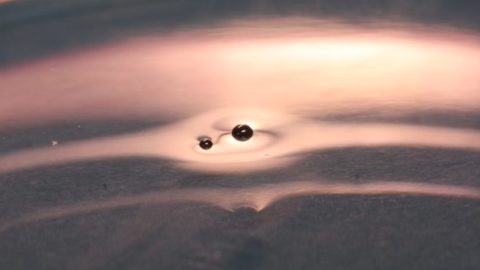The Scallop theorem can rely on inertia at the mesoscale

Organisms of varied size rely on different techniques to swim efficiently. The macroscopic world comprising of land and aquatic mammals, as well as bacteria and sperms in the microscopic realm have been investigated extensively for their swimming dynamics. However, the dynamics of organisms in-between these two extremes elude physical descriptions. A new study in collaboration by scientists in Germany and Belgium offers new insights in efficient swimming strategies within this poorly understood regime. The researchers’ findings have been published in the journal ‘Physical Review Letters’ (DOI: 10.1103/PhysRevLett.126.224501)
While the larger animals rely on coasting and inertial effects, bacteria deform according to a non-palindromic sequence of movement by relying on the fluid viscosity. In between the extremes as with planktons or insects a complex interplay between viscous and inertial effects generates the propulsion. At this mesoscopic scale, theories are scarce given the lack of model systems and the complexity of the governing equations of motion. A new theoretical study lead by Ana-Sunčana Smith’s PULS Group at FAU and executed by Maxime Hubert and Oleg Trosman, supported by simulations of Alexander Sukhov from Jens Harting’s group at Helmholtz Institute Erlangen-Nürnberg and by experiments of Ylona Collard from Nicolas Vandewalle’s group in Liège University, Belgium, shed a new light on possible mesoscopic swimming strategies.
The authors have been able to find a swimming strategy which relies on the swimmer inertia and not the fluid inertia, while harnessing the fluid viscosity by relying on a non-reciprocal sequence of movement. This theory has been validated by experiments and numerical simulations of a deforming dumbbell, swimming by deforming periodically. This study opens the way towards a better understanding of the swimming strategies at the mesoscopic scale which is particularly important for the development of synthetic swimming agents.
The article can be found at the following link:
https://journals.aps.org/prl/abstract/10.1103/PhysRevLett.126.224501
This work has been founded by the Deutsche Forschungsgemeinschaft (DFG, German Research Foundation)—Project-ID 416229255-SFB 1411
Contacts:
Dr. Maxime Hubert
Interdisciplinary Centre for Nanostructured Films and Department of Physics
Phone: +49 9131 85-70562
Email: maxime.hubert@fau.de
Prof. Dr. Ana-Sunčana Smith,
Interdisciplinary Centre for Nanostructured Films and Department of Physics
Phone: +49 9131 85-70565
Email: ana-suncana.smith@fau.de